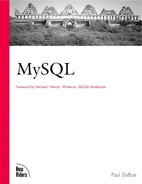mysqlaccess
This script allows you to connect to a server, retrieve access privilege information, and test the result of specifying user privileges. It does this using copies of the user, db, and host tables from the mysql database. (mysqlaccess cannot be used to experiment with table or column privileges, however.) You can also commit changes you make to the temporary tables back into the actual tables in the mysql database.
To use mysqlaccess, you must have sufficient privileges to access the grant tables yourself.
Usage
mysqlaccess [host_name [user_name [db_name]]] options
Standard Options Supported by mysqlaccess
--host --password --user --version
Options Specific to mysqlaccess
-b, --brief
--commit
Copies the temporary grant tables back to the mysql database. Be sure to execute a mysqladmin flush-privileges command afterward so that the server notices the changes.
--copy
-d db_name, --db=db_name
--debug=nSpecifies the debugging level. n should be an integer from 0 to 3.
--howto
Displays some examples demonstrating how to use mysqlaccess.
--old_server
Specifies that the server is older than MySQL 3.21. This causes mysqlaccess to make certain adjustments to the queries that it sends to the server.
--plan
Displays a list of enhancements planned for future releases of mysqlaccess.
--preview
Displays the privilege differences between the actual and temporary grant tables.
--relnotes
-H host_name, --rhost=host_name
--rollback
-P password, --spassword=password
Specifies the password for the MySQL superuser (a user with sufficient privileges to modify the grant tables).
-U user_name, --superuser=user_name
-t, --table
